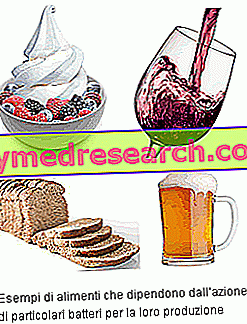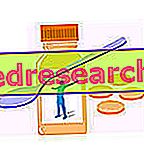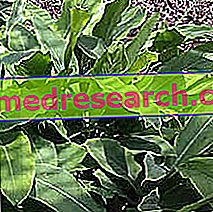Bacteria in food can be the result of:
- a processing (more or less sophisticated) of the raw material by man
- an unpleasant and unwanted contamination, potentially harmful for the health of the consumer.
What are bacteria?
Bacteria are prokaryotic unicellular organisms totally different from other more complex life forms, instead defined as eukaryotes;

NB. It is a common belief that bacteria, as a prokaryotic life form, are an evolved LESS category than eukaryotes; in fact, despite having found that some of them were probably integrated into the cytoplasm of eukaryotic cells, giving rise to the mitochondria (cytoplasmic organ attributed to the aerobic energy production), most of the bacteria had NO need to evolve into more structures complex, thanks to the typical adaptability that the strains show towards the entire terrestrial biosphere.
Classification of bacteria
The realm of prokaryotes, synonymous with bacteria (but also with blue algae), is differentiated into Eubacteria (common bacteria) and Archaebacteria . Trying not to digress into detailed classifications of microbiological interest, we report some classification criteria useful in the field of food hygiene and possible contamination. Bacteria can be classified based on:
- Shape : bacilli, cocci, vibrios, spirils, spirochetes
- Optimum survival temperature: psychrophilic (active at very low temperatures), mesophilic (active at medium temperatures), thermophilic (active at high temperatures)
- Energy metabolism : aerobes (which live in the presence of oxygen), anaerobes (which live in the absence of oxygen), facultative aerobic anaerobes (which live both in the presence and absence of oxygen)
- Spore production : sporogenic (which produce spores) and asporigens (which do not produce spores)
- Acid resistance : acidophilic (active with acid pH), neutrophil (active with neutral ph), basophilic (active with basic ph)
- Relationship and interaction with the tissue : commensals or symbionts (normally present on the tissue. Without causing disease can be useful to the tissue itself), obligate pathogens (which originate pathology or infection) and optional pathogens (which in some favorable situations MAY result in pathology or infection)
- Coloration determined by the recognition in the laboratory : gram positive (gram +) and gram negative (gram- which possess TERMORESISTENT endotoxins).
- Production of exogenous toxins : which produce exotoxins through metabolism and which do NOT produce exotoxins through metabolism
- etc...
Depending on the ability to interact with the tissue, bacteria can be considered harmful, NOT harmful or even useful. We remind you that on our body, more precisely on the skin, in the oral cavity, in the digestive tract, in the respiratory tract and to a lesser extent on the genital mucous membranes, there are more or less large and different types of bacterial colonies. Some colonies can be called commensals or symbionts, like the intestinal bacterial flora (subjectively determined) which, with its fermentation, allows the release of many B vitamins, promotes the maintenance of intestinal mucosa integrity and OPPOSES the proliferation of other microorganisms Putrescent and / or parasitic pathogens. Other colonies play an ambiguous role, such as the staphylococcus aureus present on the whole skin; this optionally pathogenic bacterium does NOT carry out activities useful to the organism MA parallel it does NOT represent a harmful agent. However, in case of reduced immune defenses and / or skin lesions it can give rise to mild infections (acne, pharyngitis etc.) but also serious (bronchopneumonia, urinary infections, sepsis, etc.).
In food, on the other hand, most bacterial strains represent a potential contaminant; infections, poisoning and food poisoning are pathogenic forms due to the ingestion of foods containing a bacteriological charge and / or their exo or endotoxins, such as to be able to originate a gastro-intestinal complication and more rarely systemic.
Ultimately, the presence of bacteria in food can easily result in food contamination that can lead to an infection, intoxication or food poisoning. However, there are also some types of harmless bacteria that are USEFUL in technical food processing and others whose ingestion can provide a valuable aid to the organism
PATOGENI Bacteria
The bacteria most responsible for food contamination, therefore of food poisoning, infection and / or toxinfection, are: Escherichia Coli, Staphylococcus aureus, Salmonella (tiphi and paratiphi), Enterococcus, Pseudomonas, Clostridium Perfringens, Clostridium Botulinum, Bacillus Cereus, Shigella, Yersinia, Listeria, Lactococco.
Sources of contamination
Soil and water: often the bacteria present in the soil reach the food due to the action of wind or air currents, not to mention that they transfer easily from the earth to the cultivated products; in parallel, the bacteria present in rainwater, in wells or in irrigation systems can be transported to food during the irrigation of the plantations, during washing before processing or when the liquid is used as an ingredient.
Raw vegetables: for the reasons listed above, often the contact between the ready-to-eat food (therefore already cooked) and the raw products (above all fruit and vegetables) can facilitate the transfer of the bacteria from the raw to the cooked determining the excessive proliferation on the latter ; it is a process called "cross-contamination".
Fecal-faecal contamination: caused by the direct or indirect transfer of faecal residues onto the food; it can be facilitated by soil fertilization and insufficient primary washing, by incorrect animal slaughtering with breakage of the digestive tract during evisceration, by irrigation with black or contaminated water, by vehiculation caused by insects or other animals, by reduced hygiene of the staff, etc.
Contamination of the farmed animal: presence of bacterial infections in the live animal
Presence of bacteria on animal skin: typical milk contamination during milking
USEFUL Bacteria in food
The useful bacteria in food are all those prokaryotes inoculated or otherwise normally present in food processing that:
- They favor the transformation of the food (eg leavening of bakery products, alcoholic fermentation, rennet)
- Promote the establishment or reconstitution of intestinal bacterial flora (eg probiotics)
they are above all: Lactobacillus Acidophilus, Lactobacillus Bulgaricus and Bifidobacteria.
It should also be remembered that, although these are normally harmless bacteria, their possible septicemic action induced by serious immune disorders or secondary immunosuppression can still increase the risk of death.



